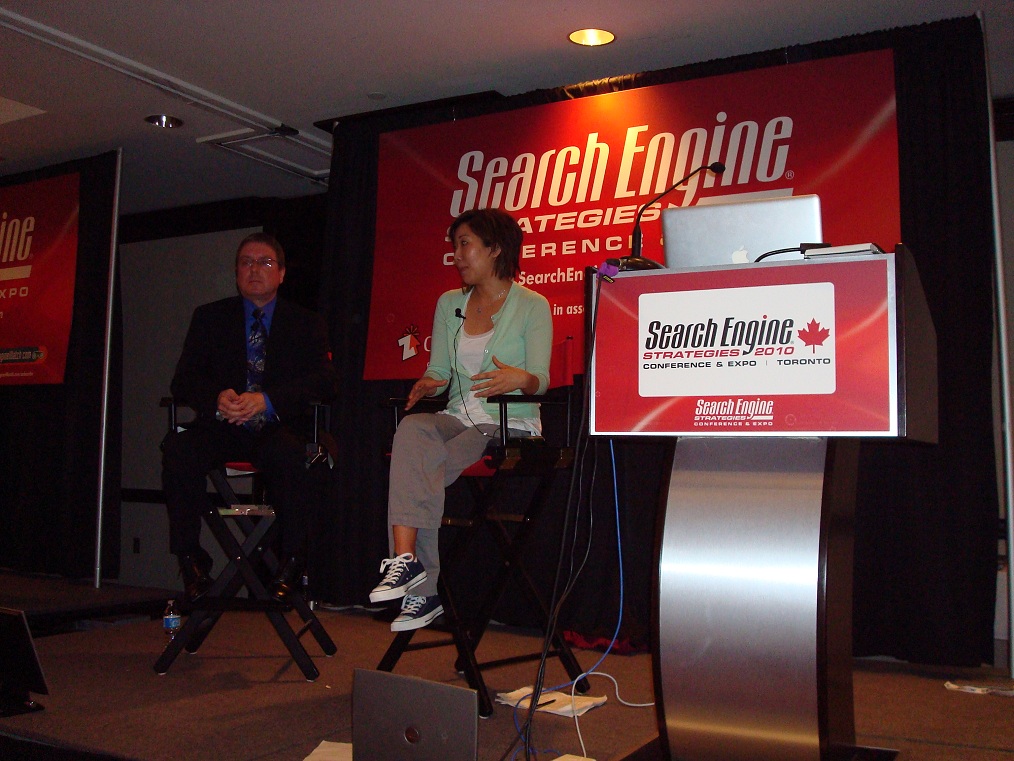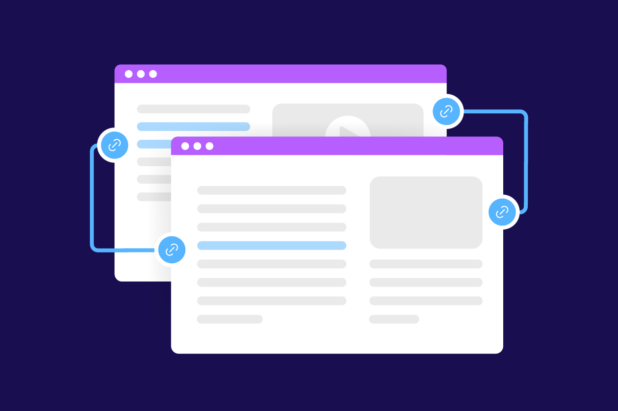 Maile Ohye, Senior Developer Programs Engineer, Google delivered the morning keynote on day two of Search Engine Strategies Toronto. Maile discussed Google’s approach to helping site owners and shared answers to burning questions from the moderator and audience.
Maile Ohye, Senior Developer Programs Engineer, Google delivered the morning keynote on day two of Search Engine Strategies Toronto. Maile discussed Google’s approach to helping site owners and shared answers to burning questions from the moderator and audience.
The format was a Q&A, and the following is a summary of the best questions and answers from the session.
How did you get to Google?
I studied computer science/artificial intelligence in college. From that point on, I went into information retrieval and then joined the department of defense. Then I took some time off, and eventually joined Google. I’ve now been at Google for 5 years.
After a previous update, we heard a story of someone ranking #1 who lost positioning (and was previously making $10,000/month just from that one ranking). The same thing again seems to be happening with the Mayday update. What exactly is that it?
We tweak little things in our algorithm all the time. Mayday was a significant update that really impacted long tail terms. A lot of people were leveraging long tail phrases for lots of traffic but it was frequently done via automated methods. We’ve looked to eliminate spam, and that’s been a big priority for us. At the same time, there were people developing not quality content (not a violation of guidelines, but also not providing value). What it does is for long tail queries, is we now just consider them queries like anything else. We are going to put as much value in those search results as all search results.
So, you can’t just add a bunch of keywords on a page and expect results just on that. This type of update is continuing and it’s a focus we have. We have other projects too to help continue making long tail traffic highly relevant.
Are you saying with long tail terms, are queries getting longer?
Yes, people have evolved as searchers. With Google when you search for over 3 terms, the snippet link increases in importance as people expect to find long queries and we want to deliver a better experience.
What’s the difference between Mayday and Caffeine?
Mayday is a pure ranking change – just looking to make the results more relevant. Caffeine is a huge infrastructure change. It’s the idea that we can now take our entire index and update it a document at a time. It gives us the scalability we didn’t have before – now we have the ability to grow even bigger and better. On top of which, caffeine is really cool because we can attach more meta data to each document. We have all these ways to push a document out faster and get it to users quicker.
Can you talk about snippets for a second? How do I decide what comes up in a snippet?
For most people, when you design a document you’re not thinking about what a snippet is going to look like in your document. What we take for the snippet is the context of the keyword in the snippet. The other place we look is in your meta description. If you put your keyword in your meta description it’s a good idea as then you have control over your snippet. The reason we used the meta description is it’s one of the few areas that people weren’t spamming. We do want to give webmasters an option.
Is there a specific way people should think about creating a document?
Overall there is a strategy you need to have with your site. What type of users do you want to attract, and what is your call to action? And so your pages should be designed with that intention. Think about your content and lay it out in a way that converts. Titles are important for search engines and semantic markup is still good. Mayday took out information that was auto-generated or not relevant. Design each page with an intention of what you want from users.
So there’s a big shift in the SEO world. Everyone was always focused on keywords/ranking algorithms. Now everyone thinks about social. Where does social fit within search?
There’s a way search is evolving, and when it comes to personalization we want to deliver results that are more and more unique. That’s where social search comes in for us – it’s expanding a theme we really want to pursue. For social search it comes from the social graph of the web layered on top of the link graph. But prioritize by having a great website first, then get involved in social media.
What are your thoughts on getting better links to your website?
When you create a site, unique and compelling products or services content is what matters most. How can you make yours different from all the other sites on the web? Your customers will link to you when they think it’s great and that will happen naturally. But, you can also look for opportunities for links too – not just by emailing a webmaster asking for links but expanding in the same way you’d expand your business. I.E., forging partnerships and adding value to others.
Links are a big part of our PageRank algorithm which is a major component on the 100’s of items in it. Links are not just based on quantity but more so on quality. We know on a link by link basis what is valuable to what and we value them all differently. It is done algorithmically and we also have a manual spam-fighting team. Just because you have a lot of links doesn’t necessarily mean you are getting value. Look for quality links not quantity.
Am I better off looking in webmaster tools for data than a third party tool?
Our mission with webmaster tools is to support webmasters within the Google ecosystem. Our data is only relevant to Google, not all the search engines. Our goal is to keep the ecosystem thriving. It’s about helping webmasters regardless of the size of their pocketbook. It’s at no cost to you. There are other tools out there, which you should explore too if you like since our tool is just relevant to Google.
Why was site speed recently highlighted as important?
The site speed update was purely from our user metrics – we know people like faster performance. We find that even when slowing results by half a second, they were actually searching less. When we removed the delay, they went back up but never to the same level (this was actually a costly experiment). This was just due to latency. We also found in tests that conversions will increase with sites that load quicker – it’s a very important aspect of your website. Faster sites can potentially outrank you.
Talk to us about Flash – is it really search friendly?
If you have a flash site, don’t expect Google to crawl it perfectly – or other search engines too. It’s just not as accessible. We’re working actively on Flash but it’s not perfect yet.
What about microsites? Are they a good idea?
Microsites were originally created to dominate search results. It was originally kind of a spammy technique. I normally don’t suggest it, Mayday and future updates are only looking for quality sites. If you want to dominate search results, you can do things like add videos/images and other data. Microsites confuse users, there are links coming in to another site that isn’t your main site, and they are hard to maintain as now you have multiple sites. It’s a jarring user experience; I don’t think they are going to work in search results in the future as they did in the past.
What about for e-commerce sites that are extremely large with lots of products? We’ve seen sites with fewer items and more information on each product outranking us.
That’s what we would expect from Mayday. Users don’t care if your site has many items, they care about descriptive content. They don’t want to see content that is just a title and an image. It comes down to creating unique content on each page. We crawl what we want to keep in the index and we keep in the index what users want to see in the search results. The drop off you are noticing is because we are focusing on content-rich pages and less on sites that are just tons of pages without value. If you link content up and bring the link structure up, we’ll crawl that more often. But at the end of the day, more content matters.


